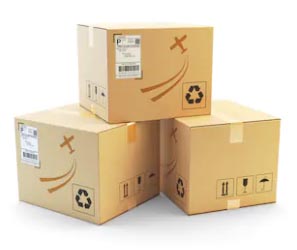
Accounting for nearly $1.3 trillion of the $22 trillion global retail markets, the e-commerce industry is booming, and its growth shows no symptoms of slowing down as more brands and categories moving to the digital space. These include manufacturers of food and beverage products
But packaging that is suited to a bricks-and-mortar retail surrounding might not be the best fit for online selling or an extended supply chain.
In this article, Here, are four challenges to consider – and our advice on how best to overcome them – when selecting packaging for e-commerce.
In this article, Mr. Gaurav Jalan Founder, and Director of India’s top packaging company Packman Packaging Private Limited shares tips to overcome 4 challenges of e-commerce packaging.
Supply Chain
A potentially larger supply chain and several modes of transport and storage mean packaging for e-commerce has to be quite robust. With a series of 3rd parties managing the distribution and fulfillment of every order, brands need to be sure that their products are contained in the packaging that’s breakage-proof and shatter-proof, and able to withstand being dropped or roughly handled. PET packaging shows all these attributes, that can eliminate the requirement for secondary packaging overall and, as a result, bring down transportation weight and expenses all while providing a premium, crystal-clear looks.
Weight Of Material
The weight of material feeds into a product’s bottom line in multiple ways. First, how much product needs to be shipped at one time and how does the volume of a shipment affect storage costs? And secondly, how does the weight of a shipment affect freight expenses? In several cases, PET is a lightweight and cost-saving option compared to glass.
Product Virtue And Safety
Products maneuvering through the e-commerce supply chain are subject to new and challenging conditions that put great performance requirements on the packaging. Not only does the packaging is supposed to keep the product fresh by keeping out excess air and moisture, but it also requires to reach the consumer in a consumer excepted condition, which means free of damage and intact PET fulfills those requirements, while also providing a barrier solutions for more oxygen-sensitive foods, along with other resistant qualities such as thermal stability, structural integrity and durability to make sure shelf-life requirements are still met.
Customization
Logistical reviews aside, a customer might not select a product in the first place if it is not looking attractive. As they cannot handle the item in the online space, visual appeal plays a critical part in determining whether a food or beverage item ends up landing in their virtual shopping cart. The end-user wants to be able to identify the brand, even if the packaging may have been designed to cater to the 3 considerations above. One of the biggest advantages here is plastic can be formed into any shape and easily customized.
When considering these 4 areas, you frequently find that plastic is the material best suited to packaging solutions designed having e-commerce in mind. Plus, it has the additional advantage of being completely recyclable, which helps reduce the material’s carbon footprint.

